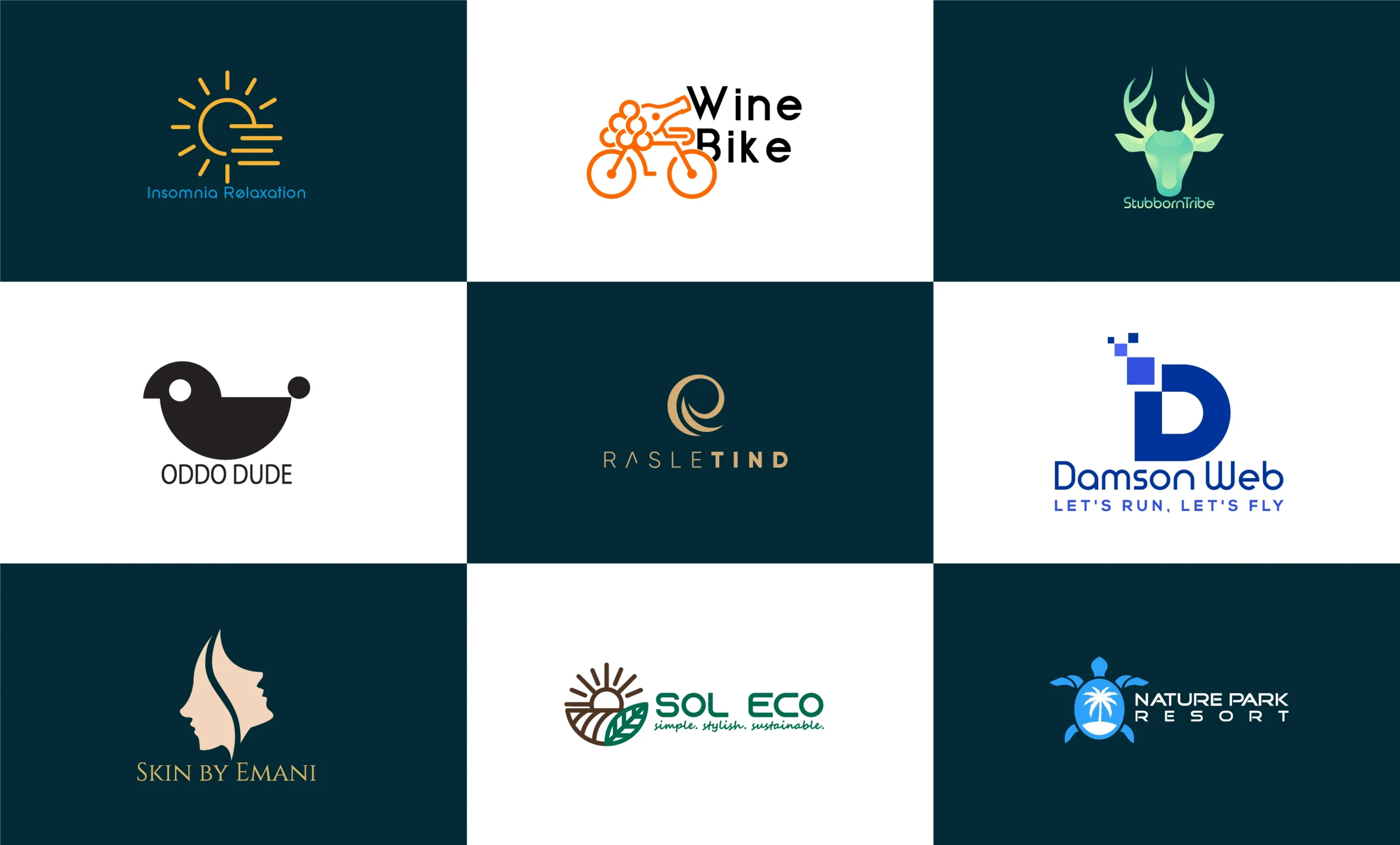Modern minimalist logo design by Rashedul Islam.


Introduction
In the ever-evolving world of branding, a minimalist logo has emerged as a powerful tool for businesses looking to make a lasting impression. This guide, crafted by renowned logo designer Rashedul Islam, delves into the principles and benefits of minimalist logo design. Whether you’re considering a logo redesign or creating a new business logo, this comprehensive article will provide valuable insights to help you achieve a versatile and timeless brand identity.
What is Minimalist Logo Design?
Minimalist logo design focuses on simplicity and clarity. By using fewer elements, clean lines, and ample whitespace, minimalist logos convey a brand’s message effectively without overwhelming the viewer. This approach ensures that the logo remains versatile and easily recognizable across various platforms and media.
ORDER ME HERE ON FIVERR
Benefits of a Minimalist Logo
1. Versatility
A minimalist logo is highly adaptable, making it suitable for various applications. Whether it’s printed on business cards, displayed on a website, or used in social media profiles, a minimalist logo maintains its integrity and impact.
2. Timelessness
Minimalist logos often have a timeless quality, avoiding the risk of becoming outdated. By focusing on fundamental design principles, these logos remain relevant and effective for years to come.
3. Memorable
Simplicity in design helps create memorable logos. A well-designed minimalist logo is easy to recall, enhancing brand recognition and loyalty.
4. Professionalism
Minimalist logos convey a sense of professionalism and sophistication. They suggest that a company values clarity and efficiency, which can positively influence consumer perception.
How to Design a Minimalist Logo
1. Understand Your Brand
Before starting the design process, it’s crucial to have a deep understanding of your brand. What are your core values? What message do you want to convey? Answering these questions will guide your design decisions.
2. Focus on Simplicity
Eliminate unnecessary elements and focus on the essentials. Use clean lines, simple shapes, and a limited color palette to create a sleek and modern look.
3. Use Negative Space
Negative space, or whitespace, is a key element in minimalist design. It enhances the logo’s clarity and balance, making it more visually appealing.
4. Choose the Right Typography
Typography plays a significant role in minimalist logo design. Select fonts that are clean and easy to read. Avoid overly decorative fonts that can clutter the design.
5. Test for Versatility
Ensure your logo works well in different sizes and formats. A good minimalist logo should be scalable and look great on everything from a small business card to a large billboard.
The Process of Logo Redesign
Redesigning a logo can breathe new life into a brand. Here’s a step-by-step process to guide you through a successful logo redesign:
1. Assess the Current Logo
Evaluate the strengths and weaknesses of your existing logo. Identify elements that work well and those that need improvement.
2. Define Goals
Set clear objectives for the redesign. Are you looking to modernize the logo, make it more versatile, or align it better with your brand’s current identity?
3. Research and Inspiration
Research your industry and competitors to understand current trends and standards. Gather inspiration from successful minimalist logos.
4. Sketch and Conceptualize
Begin with rough sketches to explore different ideas. Focus on simplicity and how well each concept represents your brand.
5. Refine and Iterate
Select the best concepts and refine them further. Test these iterations in various contexts to ensure they meet your goals.
6. Finalize the Design
Choose the final design and make any necessary adjustments. Ensure the logo is versatile, scalable, and aligned with your brand identity.
Common Mistakes to Avoid in Logo Design
1. Overcomplicating the Design
Adding too many elements can clutter the logo and dilute its impact. Stick to essential components to maintain clarity.
2. Following Trends Blindly
While it’s important to be aware of design trends, avoid following them blindly. A trendy logo can quickly become outdated.
3. Ignoring Versatility
A logo that only looks good in certain contexts is not practical. Ensure your logo is versatile and works across different mediums.
4. Poor Typography Choices
Typography can make or break a logo. Choose fonts that are legible and align with your brand’s personality.
5. Lack of Research
Failing to research your audience and industry can result in a logo that doesn’t resonate with your target market.
Case Studies of Successful Minimalist Logos
1. Apple
Apple’s logo is a prime example of minimalist design. The simple, clean apple silhouette is instantly recognizable and versatile across various applications.
2. Nike
The Nike swoosh is a minimalist masterpiece. Its simplicity and dynamic shape convey movement and energy, making it memorable and effective.
3. Google
Google’s logo has evolved into a more minimalist design over the years. The use of simple, clean typography and primary colors ensures versatility and timelessness.
FAQs about Minimalist Logo Design
1. What makes a logo minimalist?
A minimalist logo uses simple shapes, clean lines, and limited colors to convey a brand’s message clearly and effectively. It avoids unnecessary elements and focuses on essential design components.
2. How can a minimalist logo benefit my business?
A minimalist logo can enhance brand recognition, ensure versatility across different platforms, and convey professionalism and modernity. It’s also likely to remain relevant for a longer period, providing long-term value.
3. Can a minimalist logo be versatile?
Yes, one of the key benefits of a minimalist logo is its versatility. It works well in various sizes and formats, making it suitable for a wide range of applications, from business cards to large banners.
4. How do I choose the right elements for a minimalist logo?
Start by understanding your brand and its core values. Focus on simplicity, use clean lines and shapes, employ negative space effectively, and select fonts that are easy to read and align with your brand’s personality.
5. When should I consider a logo redesign?
Consider a logo redesign if your current logo no longer aligns with your brand’s identity, looks outdated, or lacks versatility. Redesigning can refresh your brand and make it more relevant and effective.
Conclusion
Minimalist logo design offers a powerful way to create a strong, memorable brand identity. By focusing on simplicity and clarity, you can design a logo that is versatile, timeless, and professional. Whether you’re embarking on a new logo design or considering a logo redesign, the principles and tips provided in this guide by Rashedul Islam will help you create a logo that truly represents your brand.
By adhering to these principles and avoiding common mistakes, you can ensure that your logo stands the test of time and effectively communicates your brand’s essence to your audience. Embrace the power of minimalism and watch your brand flourish with a sleek, sophisticated logo.
Useful Links
Top Brand Identity Design Service for Ecommerce
Premier Fashion Brand Identity Design Services

